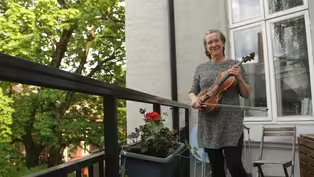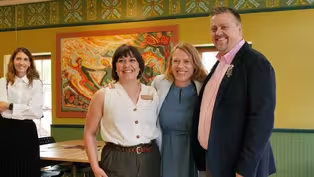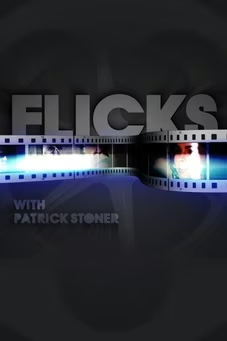
Christine Novotny
Clip: Season 15 Episode 10 | 12m 43sVideo has Closed Captions
Christine Novotny is a weaver who draws inspiration from the nature.
Christine Novotny began her career in the arts by going to school in Bloomington, Indiana for painting, but found her calling as a weaver years later when she learned to weave in Minnesota.
Problems playing video? | Closed Captioning Feedback
Problems playing video? | Closed Captioning Feedback
Postcards is a local public television program presented by Pioneer PBS
Production sponsorship is provided by contributions from the voters of Minnesota through a legislative appropriation from the Arts and Cultural Heritage Fund, Explore Alexandria Tourism, Shalom Hill Farm, Margaret A. Cargil Foundation, 96.7kram and viewers like you.

Christine Novotny
Clip: Season 15 Episode 10 | 12m 43sVideo has Closed Captions
Christine Novotny began her career in the arts by going to school in Bloomington, Indiana for painting, but found her calling as a weaver years later when she learned to weave in Minnesota.
Problems playing video? | Closed Captioning Feedback
How to Watch Postcards
Postcards is available to stream on pbs.org and the free PBS App, available on iPhone, Apple TV, Android TV, Android smartphones, Amazon Fire TV, Amazon Fire Tablet, Roku, Samsung Smart TV, and Vizio.
Providing Support for PBS.org
Learn Moreabout PBS online sponsorship(mellow music) - When I tell people that I'm a weaver, they're like, "Oh cool, what is that?"
You know, they have no, they often have no reference for it at all.
This is fun.
I feel like I'm in a reality TV show.
You know, like those moments where they're just talking in the car.
So this is North House Folk School, I don't know if you've been there.
- [Speaker] Do you teach here often?
- Yeah, I teach like, I don't know, five or six times a year.
Yeah, I moved here in 2020 to do a program with North House, a two-year residency program.
And so really they just give housing and a studio and a stipend and opportunity to work with mentors and to teach at the school.
And they like let you fly, and yeah.
And then after the program ended, we just decided to stay.
- So this is it, huh?
- Yeah.
Go.
- [Speaker] Oh, this is magical.
- It is.
- Yeah.
Yeah, so this trail, it kind of like switched backs down closer to the lake.
And then there's this like amazing rocky shore that no one is ever at, even though this is all state park.
I was working out in the mountains in California doing some outdoor education and I'd gotten a degree in painting.
I was very focused on painting.
Eventually I moved into Minneapolis and was like, "Wow, this is a pretty cool place."
And then a few years later I took a weaving class and then I've just been chasing that in some form ever since.
Like in painting you can just, whenever you want, in oil or acrylic, you can just paint over it.
You can smear the last thing you did.
Like there's almost too much freedom and creativity is bolstered by some parameters, you know, some limitations.
And on the loom, when you set up a warp, you have to make what you've put on there work.
And that's always a fun challenge.
So this is the first weaving that I ever did.
And the weave structure is overshot.
So overshot consists of you weave with two shuttles.
There's so much terminology in weaving.
And a shuttle is what holds your weft yarn.
One of them is your tabby shuttle, which is plain weave.
And that weave is the background like all of this turquoise areas.
And then the other one weaves the pattern.
And that's the gold that you can see in like all of these circles and rings.
And a really unique thing with overshot is the way that the weave structure is set up.
You can get really interesting curves and circles, like something that we don't think of as being accomplishable on a grid system, like weaving is, everything is at right angles, but you can get these incredible more organic forms.
There's a really strong history and tradition in Swedish and Scandinavian hand weaving.
I'm not Scandinavian, I'm not Swedish.
And because I learned to weave here among so many descendants, it was just, it was like the culture of weaving that I practiced the most.
(soft music) So I went to Sweden over the summer working with this 83-year-old rug weaver named Ulla Parkdal.
I met her when I was traveling in Scandinavia the year before, just briefly.
I went out to her studio, and I immediately was like, I want to come back and study with this person.
Her designs are amazing.
And it was a technique that I hadn't practiced before, but also the opportunity to work on this loom, which I'd never seen anything like it.
You press a button on top and it's attached to an air compressor and the beater comes and just slams into the cloth.
And so the quality of rugs that you can get, because there's so much power being packed into that rug, like it's really, really dense.
When they're rolled up, they stand up straight.
This is the rug that I wove in Sweden with Ulla Parkdal.
It's 10 pounds, it's very heavy.
It's been rolled up for a while.
She'd always point to these little guys and she'd go, "Oh, the little dots, the little dots are so nice."
It makes the whole carpet a lot more dynamic, just having those little flecks of color.
And it's the same with all of the different diamonds.
They're all a slightly different combination of blues and greens.
So it just keeps our eye moving around the piece the whole time instead of getting stuck in just a first read.
And you know, changing out like the weft bundles to get this variation of color.
I mean, that's something that has to be done by a human.
I want to have a point of view in weaving.
And I think that all of the teachers that I have looked toward, I look toward because they have a point of view.
This is gonna be one of the pieces in the American Swedish Institute exhibit, so.
In Minnesota we have a lot of people who are preserving cultural traditions, a lot of organizations.
One of them is North House Folk School.
Also in Minneapolis, there's the American Swedish Institute.
And I've worked with them on some upcoming shows.
I was saying before, like if you look really closely, this is the same technique that I was using on the rug, but the scale of it is just really different.
I bet it took me two or three hours to dress the loom to get it all ready to wind the warp and dress the loom.
And then this small section that I've done is probably three hours.
So the first time that my dad saw me doing this, he was like, "Wow."
Something that I love about teaching is being able to share what I've learned from mentors, things that I've figured out in my studio.
I remember making mistakes when I was learning to weave and like calling my instructor freaking out 'cause I thought I had just completely ruined it.
I love it when people make a mistake in my class 'cause it's like the best opportunity to teach and for the whole class to learn.
I definitely take inspiration from the world around me.
I'm really lucky to live in Grand Marais that has so much wild space around it and a lake, a massive lake that changes every single day.
(light music) - [Speaker] Does somebody in the area make brooms?
- Yes, Marybeth Garmoe.
I want to make things by hand because, this seems like a good one, it connects me to all of the people that came before me that made things by hand and not just made them by hand, but like chose to go that extra step and make them beautiful.
This is actually a technique that Ulla taught me, doing like all these butterflies in a row.
In these rug weaving factories, there used to be like four or five people that just did this all day.
Like their only job was to wind the right colors together in butterflies and deliver them to the weavers.
Like every day that I'm in my studio and I'm sitting there meticulously weaving by hand, like it is kind of ridiculous.
(laughs) You know, I don't think that like craft is gonna save the world and I don't think that we can go back to the way that it was before where we're all like weaving our own cloth and I don't really think that we need to, but we can think more seriously about like the way that industry produces things.
Another reason that I think weaving and making anything by hand is really important is because it just helps you appreciate everything around you.
You know, when I look at a hand-knitted sweater now, I'm like, "Wow, I can tell it's hand-knitted.
I can see all of the hours and all of the love that went into it."
I have a sweater from my mom that she hand-knitted when my parents first got married and she's passed now and I put that on and like I can feel her in that.
Sorry.
Yeah, it's like, what a gift.
(soft music) I think it's really powerful to create something with our hands.
It's total alchemy on the loom.
I mean, it's incredible.
And I think when people do that for the first time, something really like, a switch flips in their brain.
That's what happened with me when I first learned to weave.
I was just like, by the end, I was like, I have no idea what I just did.
I couldn't reproduce it, but like I want to try it again and I want to get better at this and I want to kind of figure it out 'cause it's a little magic, but it's a lot, it's a lot.
(laughs) (upbeat music continues) (upbeat music continues) - [Narrator] "Postcards" is made possible by the Minnesota Arts and Cultural Heritage Fund and the citizens of Minnesota.
Additional support provided by Margaret A. Cargill Philanthropies.
Mark and Margaret Yackel-Juleen, on behalf of Shalom Hill Farms, a retreat and conference center in a prairie setting near Windom, Minnesota.
On the web at shalomhillfarm.org.
Alexandria, Minnesota, a year-round destination with hundreds of lakes, trails and attractions for memorable vacations and events.
More information at explorealex.com.
The Lake Region Arts Council's arts calendar, an arts and cultural heritage funded digital calendar showcasing upcoming art events and opportunities for artists in West Central Minnesota.
On the web at lrac4calendar.org.
Playing today's new music, plus your favorite hits, 96.7 KRAM, online at 967kram.com.
(upbeat music)
Preview: S15 Ep10 | 40s | Weaver Christine Novotny, violist Nora Taksdal and the Versterheim museum space. (40s)
Nora Taksdal - A Norwegian Viola Player
Video has Closed Captions
Clip: S15 Ep10 | 11m 39s | Nora Taksdal plays the viola and is the principal violist of the Norwegian Radio Orchestra (11m 39s)
Video has Closed Captions
Clip: S15 Ep10 | 5m 23s | The Versterheim is a distinctive museum space that is open to the public. (5m 23s)
Providing Support for PBS.org
Learn Moreabout PBS online sponsorshipSupport for PBS provided by:
Postcards is a local public television program presented by Pioneer PBS
Production sponsorship is provided by contributions from the voters of Minnesota through a legislative appropriation from the Arts and Cultural Heritage Fund, Explore Alexandria Tourism, Shalom Hill Farm, Margaret A. Cargil Foundation, 96.7kram and viewers like you.
























